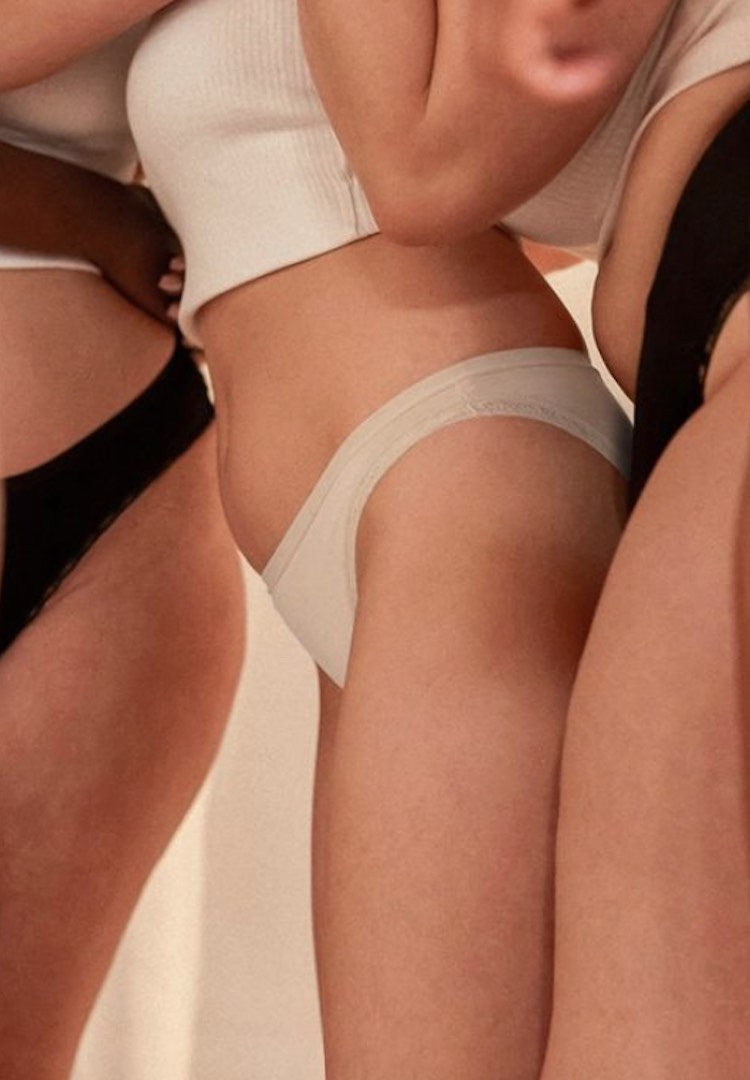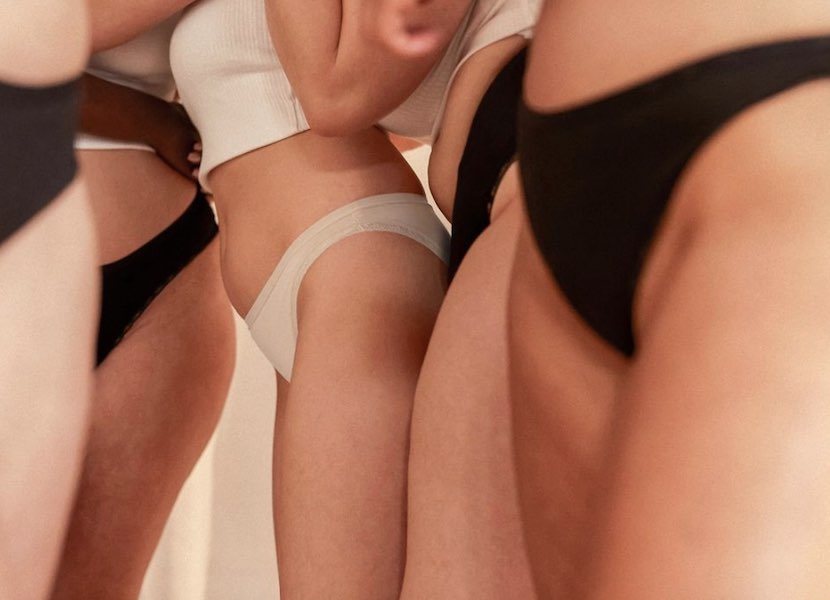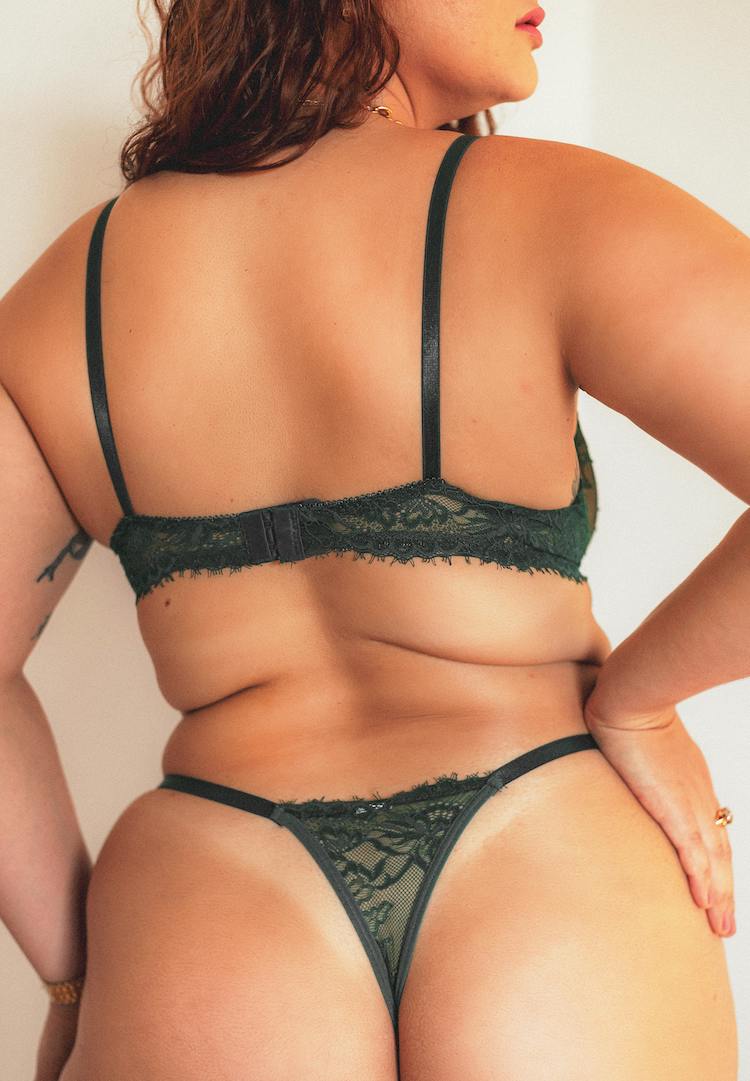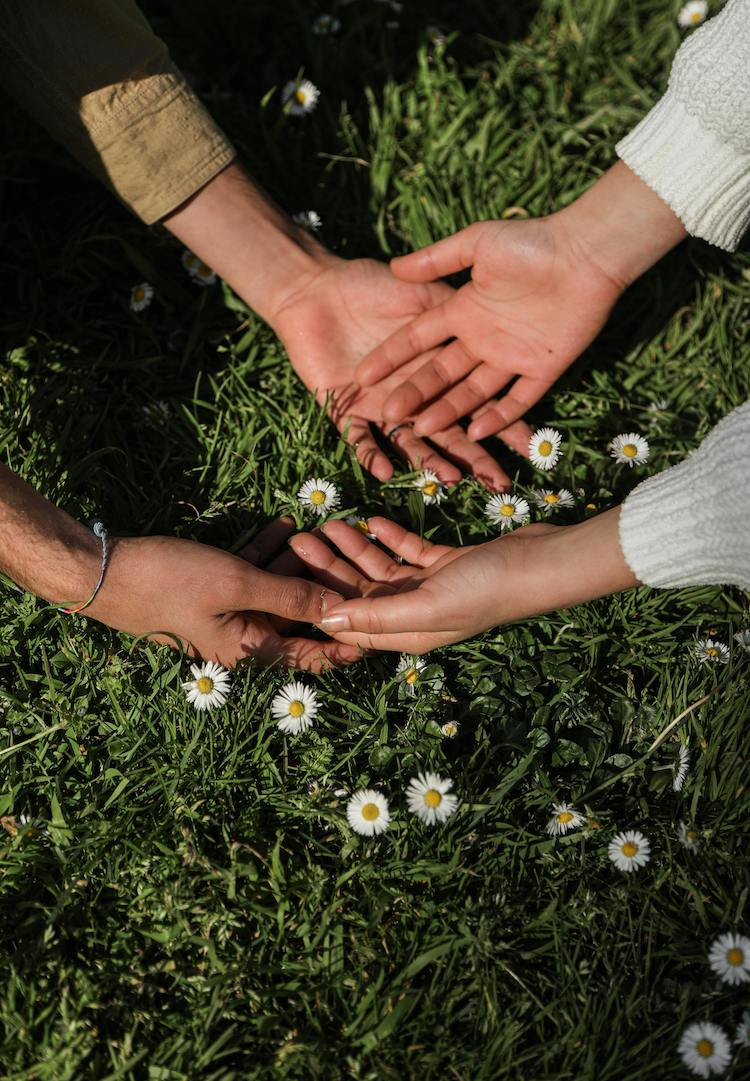4 Australian women share their endometriosis diagnosis story
IMAGE VIA @veeunderwear/instagram
WORDS BY GENEVIEVE PHELAN
“I thought maybe I just had a really low pain threshold and everyone felt like this.”
I don’t have endometriosis, but I have a best friend, a client, a past colleague and probably many other women in my orbit that do. The paradox of endo is that it’s prolific but unseen. Endometriosis affects one in nine women, and there are an estimated 200 million people worldwide living with the chronic, incurable, often misdiagnosed, and invisible-from-the-outside disease.
Having a painful, chronic condition is something that’s unfathomable for someone who doesn’t experience it. It’s even harder for someone with endo – often, endo sufferers are made to feel like ‘tummy cramps’ are just a symptom of being a female. This is why we’re passing the editorial baton over to four Australian women – my best friend included – to share their diagnosis stories and current pain management strategies for endometriosis.
Interested to hear how others navigate the world? Head to our Life section.
While March is Endometriosis Awareness Month, this conversation deserves a lot more airtime than four weeks. I do urge you to support your girlfriends or women in your circles grappling with endo, whether it’s a hug, a chat, or buying them a pair of Australian brand Vee Underwear’s limited-edition red knickers this month. $1 from every sale of red undies goes straight to Endometriosis Australia, and every bit of funding for resources and research counts.
Justine Morley, teaching student
When did you experience your first symptoms/signs of endo, and what were they?
My first signs of endometriosis are hard to pinpoint because I was diagnosed with Polycystic Ovary Syndrome (PCOS) when I was 15. PCOS affects my menstrual cycle and led to occasional pain when I was in my early teen years. I was put on the contraceptive pill and told by my gynaecologist to “come back and see me when you’re ready to have babies”. Not long after I finished high school, I started experiencing severe pain for a few days just before my period would begin.
This got worse over the next few years until it could be up to ten days a month. When these flare-ups would occur, it was like a stabbing pain in my lower abdomen. Sometimes I would throw up because of the intense pain – I couldn’t continue on with my everyday life. It also came with a fair amount of confusion because from when we are young girls, we are told that cramps are normal. I thought maybe I just had a really low pain threshold and everyone felt like this.
How and when were you diagnosed?
After a few years of pain, I returned to my gynaecologist. I was 22. She listened to me and took me seriously explaining that she thought there was a 90 per cent chance of me having endometriosis. We decided to book a laparoscopy and hysteroscopy to confirm the diagnosis. It was both the diagnosis and the treatment. During the surgery, we found that my endometriosis was widespread over my pelvis, vagina and bowel. I also had a touch of adenomyosis thrown in for good measure. They did their best to get rid of all obvious endo.
What have you done to alleviate or manage your endo symptoms since then?
During my initial surgery, I had the Mirena inserted to hopefully help lessen my symptoms, I also swapped pills for what feels like the 76th time to work alongside the IUD. Working out which anti-inflammatory drugs and painkillers work best for me has been super important. I’m staring down the barrel of annual surgeries. Having a supportive mum and group of friends that will listen to me have a cry when I have a flare-up or it gets a bit too much has been incredible.
Emma Rutherford-Ward, founder of Vee Underwear
When did you experience your first symptoms/signs of endo, and what were they?
It takes (on average) around six years for a woman to be diagnosed with endo, and I was spot on that stat. For many years, I experienced some of the common endo symptoms, but luckily not all of them. I experienced a lot of pain and discomfort in my lower abdomen. It felt like it was always inflamed, really sore and sensitive. I was eternally constipated (which later made sense as my endo had stuck my bowel and left ovary together). I often experienced bad period pain (which I thought was normal) and also pain during sex. Pretty grim.
How and when were you diagnosed?
I had laparoscopic surgery (which is the only way endometriosis can be diagnosed) and they actually concluded after this surgery that I did not have endo. This was frustrating because a couple of years later, as my symptoms were worsening, I was introduced to a specialist who was convinced that I did in fact have endo despite the lack of reporting it from my first surgery. Of course, we needed to do another laparoscopic surgery to diagnose it. I woke from the second surgery around a year ago with a stage three endometriosis diagnosis.
What have you done to alleviate or manage your endo symptoms since then?
Without sounding cliche, and without giving ‘expert’ advice as I am no expert, my symptoms are at their ‘best’ when I’m eating well, exercising and getting enough rest. As my endo is around my bowel, I really need to nurture that part of my body and ensure I’m giving it what it needs to function at its best. I notice my symptoms flaring up as soon as I’m out of my routine, which is sadly often due to being a manic business owner. But luckily for me, I do have the flexibility to work in bed with a heat pack and painkillers if need be. A loose-fitting pair of bamboo Vee undies always helps on bad cramp days, too.
Sarah McGlashan, PR coordinator
When did you experience your first symptoms/signs of endo, and what were they?
I first started experiencing symptoms of endo when I was 15 – although I would not have been able to tell you what was going on. All I knew is that I had shocking period pain. I’m talking unable to concentrate, eyes blurring, nausea to the point of throwing up kinda pain. I used to look at the symptoms list of periods and be like ‘A headache? Check. Back pain? Check. Heavy period? Bloating? Exhausted? Check, check, check’. Honestly, though, I just thought I had a bad period.
How and when were you diagnosed?
When I was 21, after multiple trips to my GP, six different pills and an Implanon later, I saw a gynaecologist. This is not to say the myriad of hormone alterers hadn’t been helping – some had, but I was still not great. After an assessment with the gynaecologist and a transvaginal ultrasound (that showed adenomyosis, bonus), I had my first laparoscopic surgery that confirmed endo.
What have you done to alleviate or manage your endo symptoms since then?
Lots of little lifestyle changes and I’m still working out the best way. I have since had a second surgery, multiple ultrasounds and have changed to a Mirena. I’m still working out if I will be better with a pill on top. Endo is an inflammatory disease so I try to eat a low inflammatory diet but I won’t lie, this is not perfect, especially on the weekend. I also prioritise stretching and stress management, I have altered the kind of workouts I do, I prioritise sleep and have put together a good medical team.
Sophia Pafitis, makeup artist
When did you experience your first symptoms/signs of endo, and what were they?
Like most, it’s really hard to pinpoint. My biggest symptoms were flare-ups of severe bloating (like seven-months pregnant level) and heavy periods. This started as early as 14, so it’s hard to know what’s responsible. These symptoms were never enough for any specialists to draw the correlation to endo. Sometimes, it’s almost impossible to know if your endo or your bowel is responsible for how you’re feeling.
How and when were you diagnosed?
In February 2019, I went into surgery to have a tumour in my left ovary removed. It was my first laparoscopy and it was expected to be an in-and-out 30 minute to one-hour removal procedure. When they opened me up they found endometriosis everywhere. It turned into a six to seven-hour procedure scraping and burning out as much as they could. The recovery was grim and I didn’t feel hugely comforted in the diagnosis being an explanation for my flare-ups.
What have you done to alleviate or manage your endo symptoms since then?
I’ve since been diagnosed with adenomyosis (endo’s evil twin sister that lives in the muscle of the uterus and can’t be burnt out or ‘removed’), so it’s ever-evolving between the two conditions. I live a really healthy lifestyle and I see a brilliant gynaecologist (Jim Tsaltas) who specialises in endometriosis. He helps me make sense of symptoms and has been pivotal to my partner and me understanding the realistic time frames we have to work with to start a family. Once I’ve had kids, I won’t hesitate in getting a hysterectomy.
This article was originally published on March 16, 2022.
For more on Endometriosis Awareness Month, try this.










